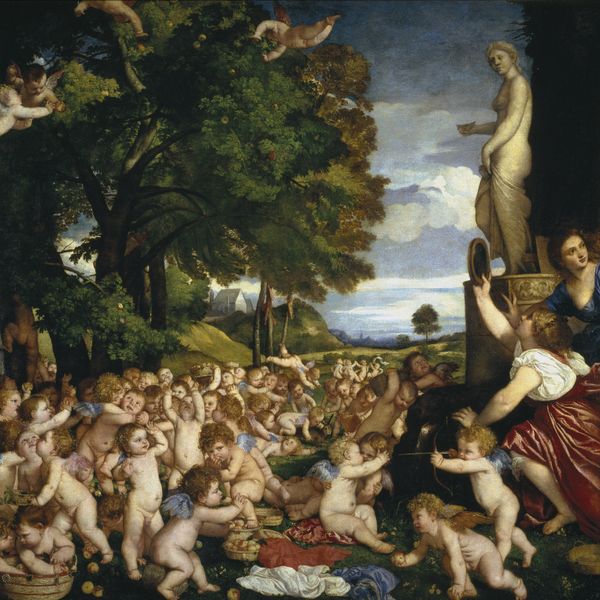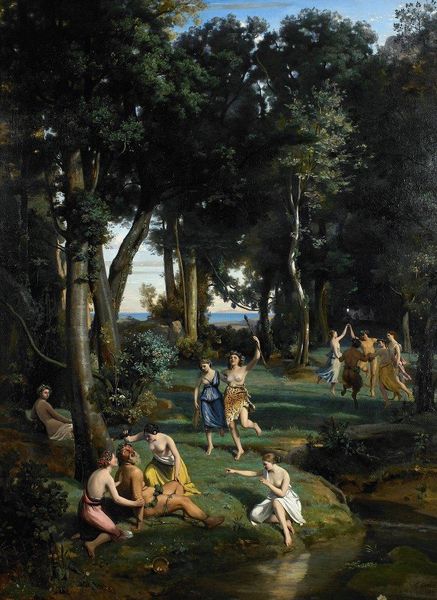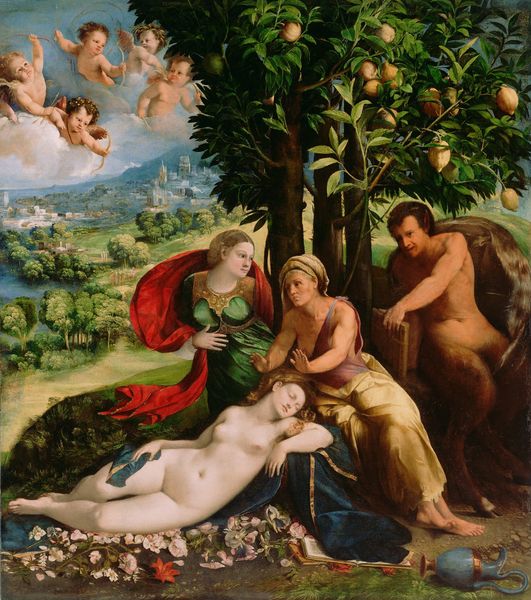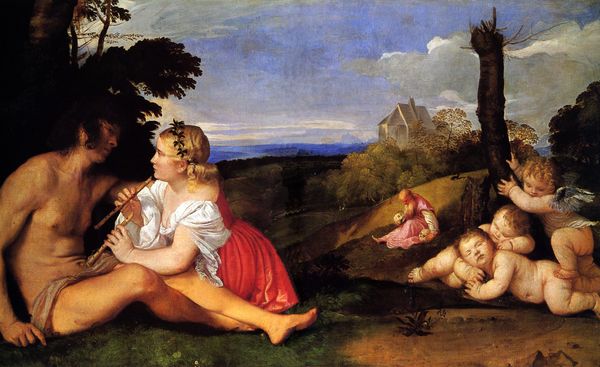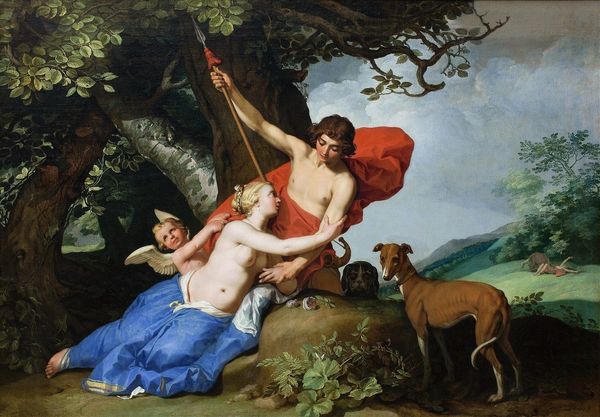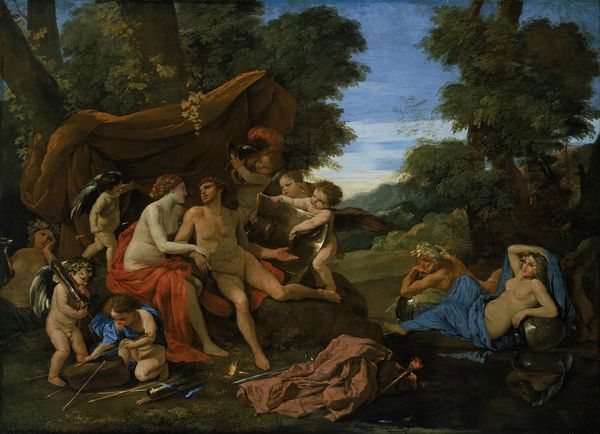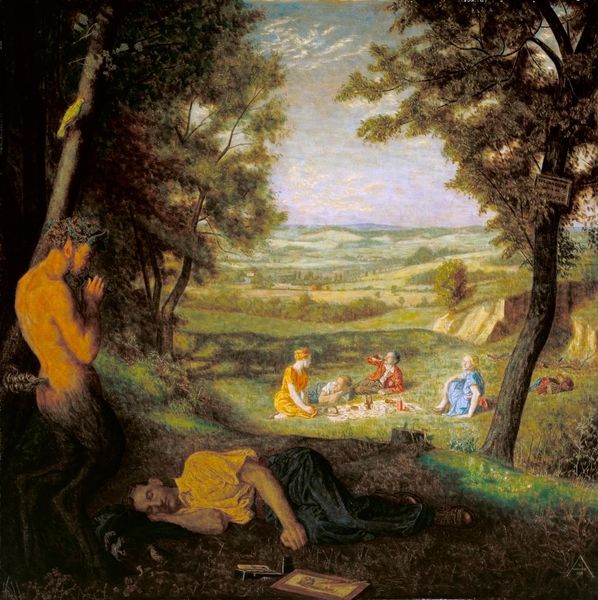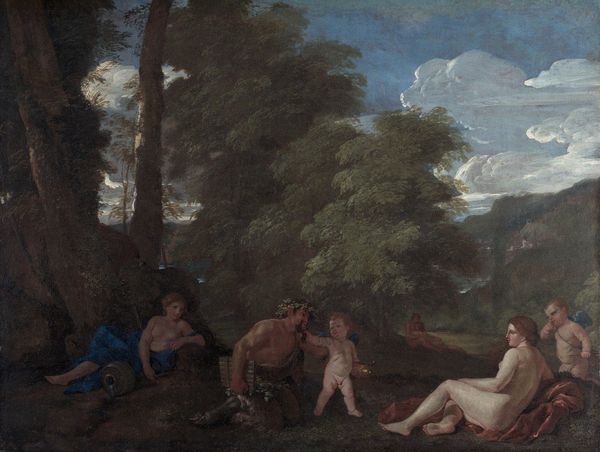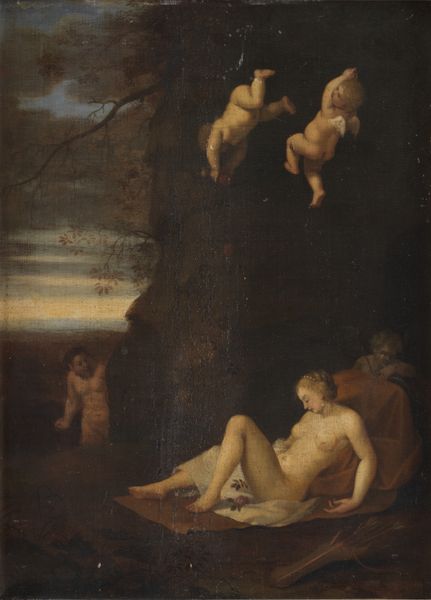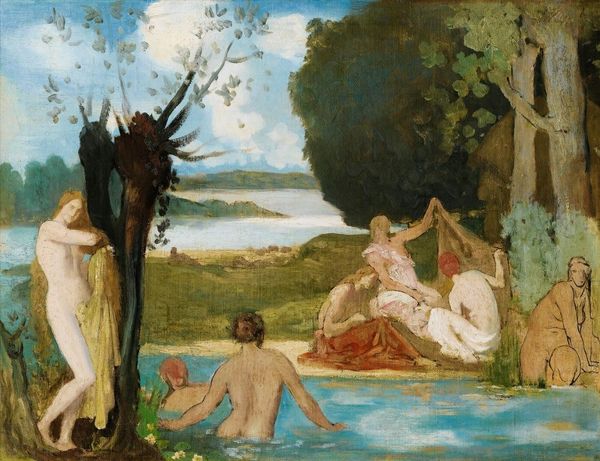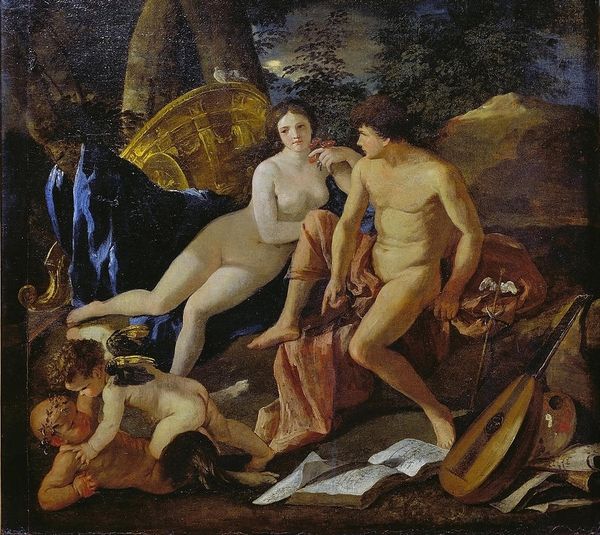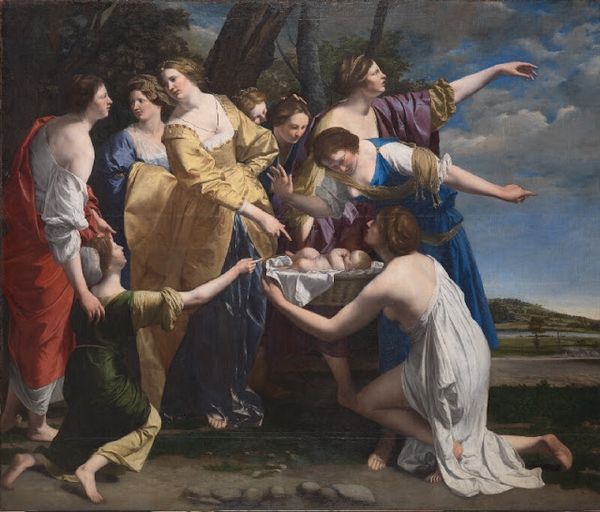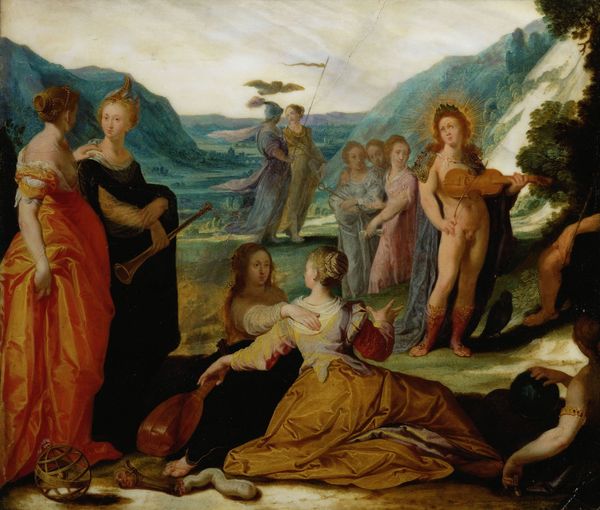
oil-paint
#
allegories
#
high-renaissance
#
venetian-painting
#
surrealistic
#
allegory
#
symbol
#
oil-paint
#
landscape
#
figuration
#
surrealism
#
genre-painting
#
nude
Dimensions: 42.9 x 33.7 cm
Copyright: Public domain
Editor: Here we have Lorenzo Lotto's "Allegory of Chastity," painted around 1505, rendered in oil. I find the scene rather dreamlike, almost surreal, with a blend of mythological figures and a tranquil landscape. What do you make of its composition? Curator: It’s primarily interesting for the semiotic relationships implied in its formal structure. Observe the stark division of space. We have the earthly, grounded realm populated by figures – some compromised, some idealized – contrasting sharply with the ethereal upper register occupied by the winged Cupid. What is being transmitted between the two registers? Editor: There seem to be…bubbles? Falling towards the woman, who looks to be the allegory of Chastity. Is the flow of these bubbles a structural way of visually conveying some kind of transformation or imposition? Curator: Precisely. The descending forms imply a unidirectional imposition onto the figure below, while the very composition emphasizes the vertical space. Consider the figures arrayed below—each appears caught in a state. Ask yourself about their relationship. Are they supporting actors? Are they thematic foils? The entire lower register provides a visual dialectic against the purified symbol in the upper. Editor: It makes me think about the struggle between desire and virtue, rendered through a landscape and dreamlike imagery. Curator: Indeed. Lotto’s sophisticated arrangement offers more than just a moralizing tale, though; it invites careful visual analysis. The artist has achieved a pictorial organization and philosophical density, no? The painting transcends a simple narrative and moves to a visual treatise on order, reason and morality. Editor: It is really much more complex than it seemed at first glance, focusing on the way the artwork has been constructed allows access to deeper perspectives. Curator: Indeed, and formal analysis encourages greater critical rigor.
Comments
No comments
Be the first to comment and join the conversation on the ultimate creative platform.
